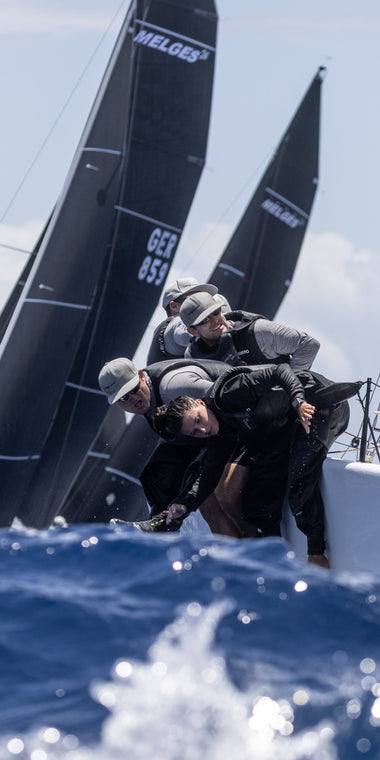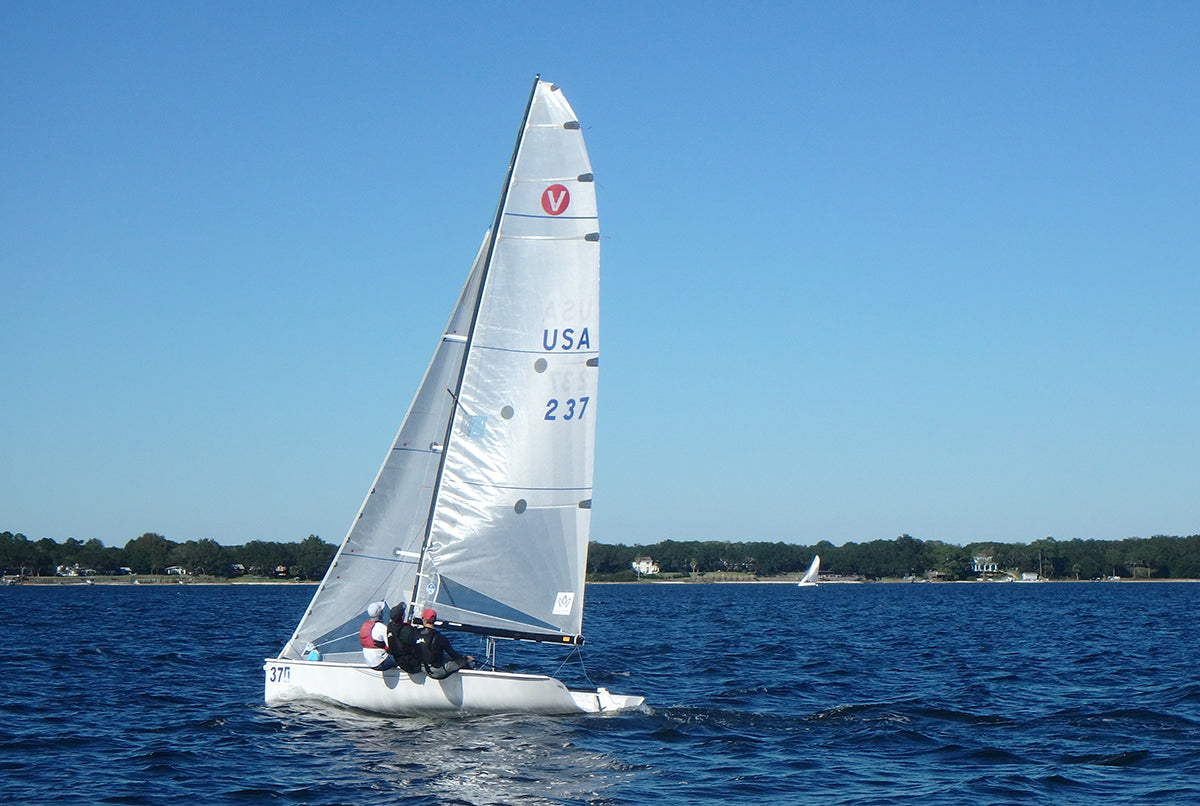THE POWER OF A PERFECT LIGHT AIR ROLL TACK
THE POWER OF A PERFECT ROLL TACK
Boat Handling Goes a Long Way

The Viper 640 class has seen a lot of growth in the last couple of years largely in part to its grassroots feel, its fun-loving fleet members, and its dedicated class management. A nice list of destination venues like Bermuda and Florida doesn’t hurt either! But the true draw to this class is the boat itself. It is a proper sport boat with the feel of a planing dinghy with the stability of a small keelboat. There is no “low and slow” mode in the Viper 640. Even in under 10 knots of breeze, you always feel like you are flying downwind and, as it soon as it is over 10 knots, hang on to your hats!
Like any other racing class, the teams that consistently find the top of the podium on a Viper 640 are the ones that demonstrate superior boat speed but also, like a high-performance dinghy, the boat handling skills are nearly just as important as the boat speed factor. A lot can be gained on the Viper race track from executing your boat handling at a high level.
Don’t Underestimate the Power of a Perfect Light Air Roll Tack
We’ve all been a victim to that the hotshot team coming at us on port tack on the first beat in lighter air conditions. We’re thinking, “no problem, we are on starboard, they are either going to have to duck us or do a slow tack to leeward and we’ll roll right over the top.” Only to end up seeing that smirk on the helmsman’s face as they look back at us after ultimately pinching us off and sending us back to the middle of the course. How did they do that?! The perfect roll tack… That’s how!
Learning the skills of executing a perfect roll tack often times begins in our junior sailing days – be it Opti’s, Lasers, or some other dingy. Then it has to be translated into different boats and with different teams. But the fundamentals remain very similar:
- A perfect rate of turn
- A well-timed “bump” from the crew weight
- The perfect amount of back wind on the jib
- Hitting the exit angle
- Easing the sails
- Flattening the boat together and effectively without over flattening
It’s that simple! Here is the breakdown of executing a perfect roll tack in light air in the Viper 640:
Once we’ve communicated that the tack is coming, we try to be patient and find a nice flat spot to start the turn. We give the mainsheet a bit of trim to close the leech and help the boat start to turn up. We might lean our body weight to leeward just a tad, but we don’t aggressively heel the boat to leeward. The initial tiller movement is quite slow as we try to let the boat carry its momentum into the wind as long as possible. No one moves until we have turned all the way through head to wind and the jib starts to backwind.
When the jib backwinds, the helmsman accelerates the turn (pushing it all the way into the bridle if using the aft mainsheet set-up) and the crew now, smoothly but deliberately, moves their weight hard to the rail (on the new leeward side). It’s critical to wait to do this “bump” until the jib has backwinded because now we are using the pressure from the wind to help us generate the roll. If we roll too early, it slows the turn down and we don’t get the leverage from the wind to help generate a powerful roll.
When we think the boat has now reached its maximum heel, the jib trimmer will now switch the jib, the main trimmer will release the main, and the team will hop to the new weather side and use their shoulders as much as possible to pump the boat back to flat. It is crucial not to let the boat over-flatten. Depending on how much wind there is, you’ll have to decide how many crew members are needed to flatten. It is also crucial that both sheets stay eased as you bring the boat back to flat because the boat will experience an apparent wind shift aft as the mast comes back to vertical. You need to keep the leeches open to allow for maximum acceleration.
Once the boat is flat and you’ve hit your exit angle, you can trim the sails back into the normal upwind look. Remember that the Viper really likes to sail low angles upwind when it is light, leaning on the jib for power. So we try to avoid coming out of the tack at a lower angle. If you come out of the tack to close to the wind, you will be underpowered and down speed.



























